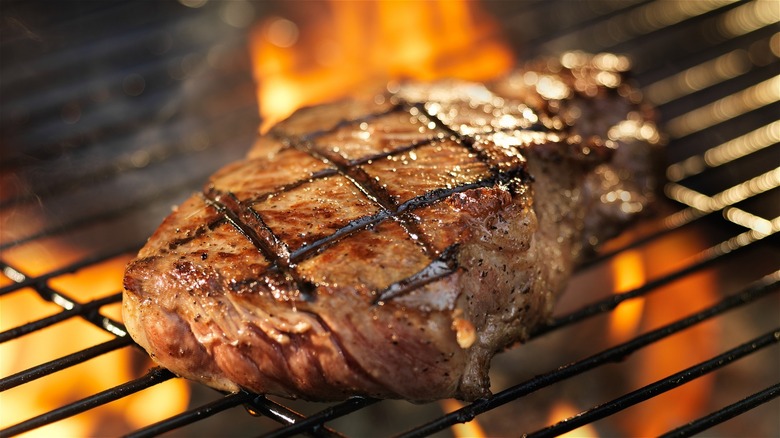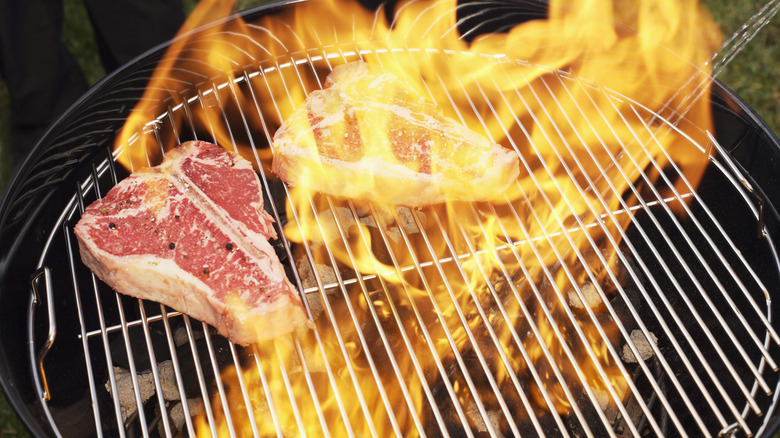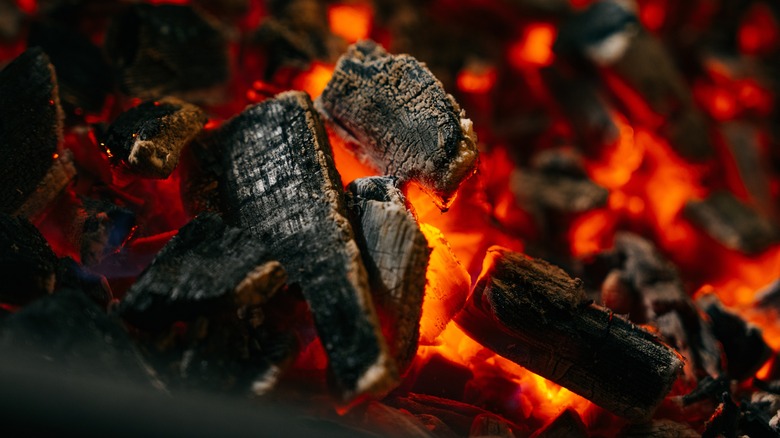The Charcoal Rule To Follow If You Don't Want To Distort Your Steak
There are a few things you probably already know to consider before grilling up a steak dinner: find the right cut of meat, generously season with salt and pepper, and take the meat out of the fridge an hour before cooking so it can come to room temp. But there is one thing you may be neglecting: cooking fuel. While open-flame, charcoal grilling is the preferred method of many for cooking a steak, you may be inadvertently warping the flavor of your steak with your choice of burning material.
If you've ever bit into a perfectly grilled steak and come away with a mouth full of slightly chemically-flavored meat, you've already run into a common problem that occurs when steak is cooked with the wrong type of charcoal. We'll walk you through how to avoid this steak-cooking mistake in the future, and give you the best method for a smokey, delicious grilled cut of meat.
The charcoal type you should avoid
When you think of charcoal, you may imagine perfectly uniform, pillow-shaped, deep black rocks. These are known as briquettes, and are a popular choice for many home barbecuers for a few reasons. It's affordable, and thanks to its uniform shape, evenly distributes temperature, leading to easier heat control while cooking. But part of what makes briquettes so affordable is that they aren't pure charcoal — they are often combined with binders, such as saw dust and wood chips, notes Char-Griller, as well as chemicals. This helps to bring down the price point, and yes, makes them easier to light, but it also causes chemicals to off-gas and potentially leach into your steak.
Those binding agents are the reason for that kerosene-like flavor you may be detecting on your steaks. You should also avoid lighter fluid when it comes to lighting your grill, as it can also distort the flavors of your steak (per Grill Simply). Instead, turn to an all-natural lump charcoal and chimney.
Why choose lump charcoal?
Lump charcoal is simply made up of charred natural wood, which is a more authentic and organic fuel source than briquettes. Because there are no binders in it, you won't run the risk of infusing your steak with a foul taste. Lump charcoal offers rich, smokey flavors because it is able to achieve scorching heats for a longer period of time than charcoal briquettes (per Smoked BBQ Source) — and indoor stovetops and ovens just can't compete. Most charcoal grills can range from 500 degrees to 1,000 degrees Fahrenheit, per Cutting Edge Firewood.
These high heats cause what is known as the Maillard Reaction, which essentially causes the chemicals in foods to reduce in water and sugar, leaving you with mouth-watering, browned meat, says culinary scientist Jessica Gavin. That chemical reaction is what gives us the tantalizing sear that is a signature of charcoal-grilled steaks. So even though working with lump charcoal may require a little more time and patience, it's worth it for that classic steak flavor.


